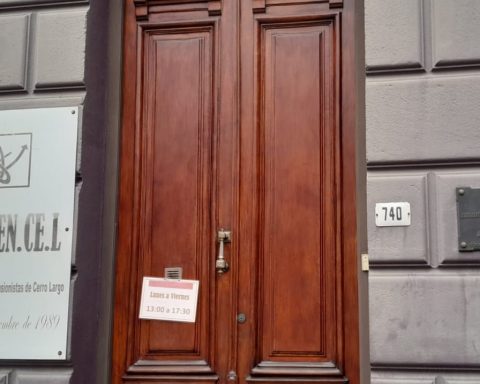Next Tuesday, the Regulatory Unit for Energy and Water Services (Ursea) will publish the Import Price Parity (PPI) report for the last month, one of the inputs that the government will take into account, along with the numbers from Ancap, to define what will happen to fuel rates in April.
Data from the US Energy Information Administration (EIA) updated to Monday, March 21, show that in 24 days from the validity of the new measurement window – it began on February 26 and ends on March 25 – prices had significant upward variations.
On the coast of the Gulf of Mexico in the US (Ursea reference) the simile of Super 95 rregistered an average value of US$ 0.829 per liter, with a 19% increase compared to the immediately previous monthaccording to data processed by The Observer. For Super 95 gasoline, the most consumed in the country, Ursea takes the average international price of two types of gasoline: CBOB Regular 87 and CBOB Premium 93.
In the case of diesel, it has as a reference the price of Ultra Low Sulfur Diesel (ULSD 62). LAt the closest possible update to what the PPI would indicate, it was 26% above the previous measurement. The average price of a gallon of this fuel was US$0.926 per liter. This exercise is only an approximation to see how the trend in the international market for refined fuels has been in the window period that Ursea analyzes each month.
On Marchthe The Executive Branch increased fuel prices for the second time in a row so far this year, and in a context marked by growing volatility in international oil prices after the start of the war between Ukraine and Russia. On that occasion, while the Urea technical report suggested adjustments of between 5% (naphtha) and 9% (diesel), the correction was partial and stood at 2% for both fuels.
Brent crude oil prices averaged $100 per barrel in February, and $118 in March. This Thursday the 24th, Brent crude ended at US$ 119, with a daily drop of 2%.
The official decision will be made between Tuesday the 29th and Thursday the 31st of next week, with the result already in sight of the referendum against 135 articles of the Urgent Consideration law. It should be remembered that the Executive is determined to continue with the mechanism based on the PPI as the “policy” for setting fuel prices, even if the 135 articles of the LUC are repealed.
In addition to the Ancap PPI and price report, another item that will be on the table is inflation. The rise in prices accelerated in February and was bordering on 9% andn the accumulated of the last 12 months, so the government should also consider that point. Any adjustment will add extra pressure on prices, so hopefully that point will be taken into account at the time of the decision. Until now, the antecedents show that the government always acted in a discretionary manner in the application of the PPI when it had to resolve.
This Thursday the weekly Search reported that in Ancap the government is expected to define an upward adjustment for April. The entity received a shipment in February with a reference price of US$97.83, another in March, and the arrival of another two is expected in April, where the rise in the international market will be reflected.
















